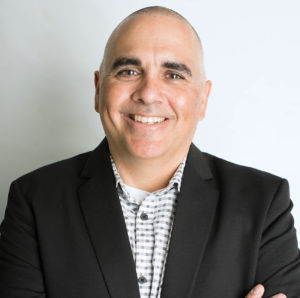If you're a freelance web designer who wants to stop working with difficult clients and start booking your dream clients, in this article I’m going to share with you:
- Some all-too common web design horror stories (and how to avoid them).
- Who’s really responsible for web design projects that go sideways.
- My number one rule for making sure you’re the right web designer for your potential client.
- The different types of clients and web designers (and which combinations to avoid).
- Potential pitfalls you may encounter so that you can make sure you’re prepared.
- 8 questions to answer before starting your next web design project.
- The real purpose of a web design consultation (it’s not what you think!)
- Freebies for you whether you’re a client or a designer to help you make sure your next web design project is a success.
But before we dive in, I want to give you the exact client consultation process I use in my business to make sure I'm a good fit for my clients! Just enter your name and email address below and you'll get a downloadable PDF that will tell you:
- Exactly what I say to kick off the consultation call
- The exact questions I ask potential clients
- The seven steps to a successful web design consultation.
Enter your name and email address below and I'll send it straight to your inbox!
Web Designer Horror Stories
As a web designer and someone that teaches people to DIY with WordPress, I’ve heard more than my share of web design horror stories.
Here’s what happened to Lorraine:
“I spent £5,000 a few years ago on a custom site – stupidly paid it all before it got delivered and all these years later still waiting for it….They disappeared completely and I was so devastated I just gave up on it. I have just repurposed my old logo and I’m trying to build a site myself using WordPress. The distrust still lingers… I don’t think the guy actually knew what he was doing to be honest… and at the time I don’t think I really did either….”
Zoe H. told me that she learned “There’s no such thing as a free lunch”:
“Our first web designer offered to build a website for free and we’d pay hosting. He did build a great website but was notoriously hard to get hold of and in the end he just disappeared and we couldn’t get any updates to the site at all. We DIY currently – the trust went!”
And Deb M.’s project was a total disaster:
“It seems like it always takes them twice as long to complete the project as what their quote says. One guy – all he wanted to do was argue so I fired him. The second guy said he would be done in 45 days. I didn't have my videos all done – so some of the delay was me. But when they finished they forgot the membership plugin and had to go back and add it. How do you create a membership website without the membership plugin? I went with a not-so-great design thinking that I would have the website in 45 days and then could change it as I went along… But because of the “custom” theme – nothing was changeable unless I hired them to do it! I gave up and went to another platform.”
Client Horror Stories
And as a mentor to other web designers, I also hear lots of “nightmare client” horror stories:
Take my Web Designer Academy student Tiffany, for example:
“I have a client who has decided not to move forward with her website. She provided the initial payment, and I began work on her landing page. She never made her second payment (was due about 3 weeks ago) and had really stopped communicating with me about a month ago. I had a bit of feedback on the initial landing page I provided, but she never responded so nothing was ever finalized. She now wants a refund since she is not moving forward.”
Here’s what happened to Web Designer Academy graduate Claire:
“I have a client who told me she wants to launch in two weeks, but she hasn’t gotten any of her content to me and she keeps wanting to add more to the project so that it’s all ready when she launches. I keep telling her that I need her content and that now there’s no way we’ll be ready by her launch date, but she’s insistent that I have it done by then.”
I’m also not immune to challenging projects, especially when I was just starting out.
I had trouble getting content from clients, revisions got completely out of hand and projects would drag out long beyond the target completion dates, which left me spread thin with too many open projects at once.
The Fallout
As an experienced web designer, it saddens when someone comes to me feeling desperate yet afraid to trust hiring someone again because they’ve had a bad experience with another web designer.
It’s like I have a black mark on my record even though we’ve never worked together, and I know if I choose to take the client on, it will be a more difficult job because I have to work twice as hard to earn their trust. It definitely makes me think twice about taking on clients who have been burned by other web designers.
As a mentor to web designers, it also makes me sad to hear stories of freelancers who want to quit because they’ve had so many bad experiences with people written off as nightmare clients who don’t get their content in on time, don’t respond and are bossy and demanding.
Whose fault is it?
As I’ve worked with more clients and refined my process, and as I’ve mentored more web designers to help them manage their clients, what I’ve come to realize is that the problem in all of these scenarios are not that the web designers are bad or the clients are nightmares.
The responsibility for projects going sideways lies on both sides – and it’s almost always about poor communication and setting expectations rather than bossy clients or inept designers.
Building a website is a lot like building a house – a project my husband and I are in the beginning stages of undertaking. There are so many things to consider, and there’s so much we don’t know that we don’t know.
When people hear we are building a house, most tell us their horror stories. “Don’t go with this builder. We thought they would let us change this and do that, but it wasn’t included and we found out later and it cost us thousands of dollars…”
The people who have had great experiences tell us, “Take your time. Do your research. You don’t know what you don’t know. Ask lots of questions. It’s your builder’s job to help educate you on what decisions need to be made and give you access to information so that you can make the right decision for you, but it’s important to do your own research too.”
How to Make Sure Your Next Web Design Project is a Success
So if you want to have a great experience on your next web design project – both as a client and as web designer – the same advice goes for you:
Take your time. Do your research. Ask lots of questions. You don’t know what you don’t know.
As a client, it’s your responsibility to know what kind of web designer you need – beyond the pricing and the portfolio – and give yourself plenty of time to for the project.
And as a web designer, it’s your responsibility to know your capabilities and how you can best help your client – and just as important, what you won’t do for your clients – and make sure they understand what is expected of them throughout the project.
Because even super-talented web designers may not have developed the skillset to manage clients, web design projects, client deliverables and expectations.
In fact, not all of them want to get that deep into client projects, they just want clients to tell them what they want and they’ll do it!
As and a client, if you don’t know how to (or want to) take charge of the web design project, that’s where you can end up like Lorraine and be out £5,000 without a website.
And I’m not blaming Lorraine here. There’s no circumstance I can think of where it would be okay for someone to take five grand from someone else and disappear – but I have seen web designers get completely overwhelmed with how to manage a client project, the client has no idea what’s going on and gets frustrated, one fires the other (or worse, just stops being responsive), leaving the client desperate with no website and a looming launch date and the designer feeling frustrated and defeated.
The #1 Rule For Finding the Right Match for Your Next Web Design Project
So whether you’re a client or a web designer, here’s my number one rule for making sure you find a good match for your next web design project.
KNOW YOURSELF.
In my experience working with clients and mentoring web designers, I’ve found that there are pretty much two types of clients out there, and two types of web designers.
When you get the right match, oh, it’s a beautiful thing!
If you’re the client, you walk away having loved every minute of the experience, learned a ton and feel totally empowered. As the designer, you can’t believe this is your job and that you get to work with your dream clients. It’s like you’ve found yourself living out Taylor Swift’s song “Classic”:
You got that James Dean daydream look in your eye
And I got that red lip, classic thing that you like
And when we go crashing down, we come back every time
‘Cause we never go out of style, we never go out of style
But when you get the wrong match, oh no.
It’s like you’ve found yourself living out “Blank Space.”
…You're the king baby I'm your Queen
Find out what you want
Be that girl for a month
Wait the worst is yet to come, oh no
Screaming, crying, perfect storm…
So how do you get to “Know Yourself”? Read the descriptions below to find out which type of client or web designer you are, who is your best match and who you should avoid!
The Four Personality Types
Client Type #1: Monica Gellar
You’re the kind of person that knows exactly what you want to have done for you down to the pixel. You’ve got everything ready to go, and honestly if you could do it yourself and had the time, you would because you want to control the details.
You’ve already planned out the whole project, you’ve got all of your stuff ready to go, and you just need the right person to build it for you.
If you’re a Monica Gellar, then it’s totally fine for you to hire a freelance web designer that’s not well-versed in project management but who has the talent to bring your vision to life.
YOUR BEST MATCH:
If this sounds like you, then the Chandler Bing Web Designer is the best fit for you (#duh)!
Here are some questions you can ask during your consultation to find out if you’re talking to a Chandler Bing.
Say something like, “I know exactly what I want, and I’m looking for someone who can take direction from me to bring my vision to life. Tell me how you typically work with your clients? If their answer doesn’t align with your vision, it doesn’t matter how good the price is, this person is probably not a good fit for you. And if your web designer doesn’t work that way, now’s the time for them to tell you.
- “How do you bill for client projects? Is it hourly or a flat rate?” Make sure they give you an estimate. What do they have in place to control costs?
- What do you need from me to complete your work? Make sure you’re clear on what’s needed, you have time to pull it together and do your research to make sure nothing is missing.
- How much time do you anticipate this project taking? If the designer estimates 45 days like in Deb M.’s case go ahead and wait to schedule that launch until 90 days out. Give yourself plenty of time for the unexpected.
THINGS TO WATCH OUT FOR:
Custom isn’t always better.
If you have a very specific design in mind, it may need to be custom-coded for you, and like Deb M. found out the hard way, when you have totally custom work done and you need to make changes, unless you know how to code you probably won’t be able to make them yourself.
Make sure to ask your designer what theme they are using and if you will be able to make changes yourself after the project is over, and if not, know how much will changes will cost.
If a designer is re-creating your vision from scratch rather than collaborating with you on their design package, you’ll likely pay an hourly rate rather than a flat fee, which gives you less control over the budget. Your designer should be able to give you a close estimate, but set aside some of your budget for the unexpected.
Client Type #2: Rachel Green
If you’re the Rachel Green, you have a general idea of what you want your website to look like and what it should be able to do, but you don’t know exactly how to get there. You’re gonna need a bit of hand holding.
You don’t know what you don’t know. You want someone to guide you and partner with you throughout the whole process and educate you all along the way, and help you see opportunities that you may not have otherwise seen.
YOUR BEST MATCH:
If this sounds like you, then the Ross Gellar Web Designer is a great match for you.
You want someone that offers a comprehensive design package that can be customized to meet your needs – and who has a proven track record for managing client projects and completing them on time and on budget.
Here are some questions you can ask during your consultation to find out if you’re talking to a Ross Gellar.
- Tell me about your project management process. They don’t need to describe in detail their Agile project management methodology – your eyes will glaze over. But you want to know that they have a plan and a process.
- How do you schedule your projects? How many meetings can I expect to have with you? This will give you a good understanding of what you can expect from the process and how much of your time will be required.
- By when do I need to have my content to you to meet my deadlines? Will you let me know exactly what I need to provide? This will help you understand if your designer has a good handle on managing the project. If they are leaving it up to you to decide on all the content, this can be a red flag that they don’t have a clear plan.
- How do you bill your clients? When are payments due? Typically these projects will be a flat rate, and it’s reasonable to expect to pay a deposit up front before any work has begun to secure your project on the designer’s schedule, but then the rest of the payments should be made throughout the project as certain milestones are met. This keeps both sides accountable and the project moving forward.
THINGS TO WATCH OUT FOR:
Be prepared for the amount of work you as the client will need to put into the project! Your designer should guide you through it, but you’ll still want to make sure you’ve set aside sufficient time on your schedule to research, make decisions and pull everything your designer needs together.
If your designer is offering a flat-rate package, typically if you want to add or change something you can typically expect an additional fee. The reason for that is they’ve created a repeatable process that takes a certain amount of time, and when they have to deviate from process it takes more time and resources, which means more money.
Web Designer Type #1: Ross Gellar
If you have a very specific web design process that you walk your clients through, and you offer set design packages that clients can purchase, you're a Ross Gellar. You use a certain theme and a specific set of plugins as standards on every client project, and you do minimal custom coding because your process is so systematized.
You make sure clients know exactly what is expected of them, give them checklists, deadlines and reminders, and when they get stuck you help them make the best decision for their business.
YOUR BEST MATCH:
If you're a Ross, then you’re a great match for the Rachel Green, who needs your experience and guidance, needs your accountability to keep them moving forward and needs the security of knowing exactly how much the project will cost.
On the flip-side, you’re not a great match for the Monica Gellar, whose vision doesn’t fit into the packages you offer, who wants you to deviate from your typical process, and have the schedule dictated by their deadlines and needs.
THINGS TO WATCH OUT FOR:
Allow for plenty of time to complete the project and be prepared to hold your clients' hands through the process! They are going to need your knowledge and support all along the way. If you leave it to them to figure out what to give you, that's when the project is going to get off-track.
Web Designer Type #2: Chandler Bing
You love supporting clients who know exactly what they want and have very specific visions that you can help bring to life. You like being hired for a very specific job with clear outcomes, and you’re happy to bill by the hour until the work is done.
You’re not interested in holding your clients’ hands, you want to work at the direction of someone who knows exactly what they want.
You’re prepared to custom-code as needed to bring the vision to life, while also making sure that your client is fully aware that they may need to hire you in the future if they need changes for anything that you custom-code for them.
YOUR BEST MATCH:
You’re a great match for Monica Gellar who wants to pay you by the hour and knows exactly what they want and doesn’t need their hand held. You can go into work mode and get these projects DONE.
On the flip-side, you’re not a good match for Rachel Green who needs you to walk them through the whole process, support them and help them make decisions. If you book this kind of client, you can expect to be frustrated because you won’t get content on time because the client doesn’t know what you need and the revision process will drag out because they didn’t know what to expect and now that they can actually see it, they want to change it.
THINGS TO WATCH OUT FOR:
When you're working with a bunch of Monica's, it's very important that you manage your schedule so that you don't commit to too many projects and deadlines at once. Monica's are strong personalities who know what they want, so you must hold your boundaries and make it crystal clear what what you're doing and how much it costs so that you don't end up working for free.
If you’re a web designer, it’s important for you to decide how you want to serve clients.
It doesn’t matter whether you want to be the Ross or the Chandler. Or if you want to start out as the Chandler until you get more experience and then transition to the Ross.
Either way is fine – it’s just important that you’re clear on how you work and who is a good fit for you do you don’t end up with clients who expect something you can’t deliver.
Think about it – Monica and Ross? Ew!
Rachel and Chandler? Never!
Because the last thing either of you want to have happen is the client gets labeled DIFFICULT, and the web designer gets labeled as being unprofessional and inept and you both walk away broke and miserable.
And that’s why having an effective consultation call is so critical!
What a Consult Call is Really For
As a web designer, your role on a consultation call is not to close the deal.
It’s to find out as much as you can about the client and their needs and make sure they are a good fit for the way that you work.
GET MY FREE 7-STEP WEB DESIGN CONSULTATION PROCESS & SCRIPT
Just enter your name and email address below and you'll get a downloadable PDF that will tell you:
- Exactly what I say to kick off the consultation call
- The exact questions I ask potential clients
- The seven steps to a successful web design consultation.
Enter your name and email address below and I'll send it straight to your inbox!
It’s your responsibility to decline projects that aren’t going to be a good fit for you, or if you do decide to accept them, know exactly what you’re getting into and have a good plan and support system in place to make the project successful.
Potential clients aren’t always going to understand what they need in a web designer. It’s your job to educate them and help them make the best decision for them, even if it’s not working with you!
And as a client, use the consultation call as an opportunity to learn as much as you can about the process and the amount of work and time required on your part to make the project a success.
Your Turn
So tell me in the comments below, are you a Monica, Rachel, Ross or Chandler?
Have you ever had a web design horror story or a nightmare client?
What did you learn from the experience?
Next week, I’m going to share three common pitfalls I see clients encounter that stall their web design projects and how to avoid them, both from the client perspective and the web designer perspective!
Freebies
If you’re a web designer or are thinking about starting a freelance web design business, enter your name & email address below to get my 7-Step Web Design Consultation Process & Script to walk you through how to do an effective client consultation and make sure you’re booking your best match!






